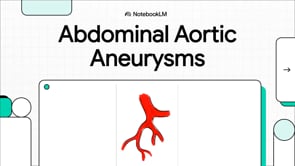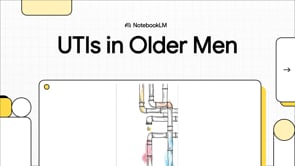This comprehensive review reveals that cerebral cavernous malformations (CCMs) are abnormal blood vessel clusters found in approximately 0.5% of people, with most cases (85%) being single sporadic lesions while 15% are familial. These malformations can cause seizures (50% of cases), neurological deficits (25%), or bleeding, with annual hemorrhage risks ranging from 0.1-1% for incidental findings to 3-10% for previously bleeding lesions. Treatment options include surgical resection (80% seizure control success), stereotactic radiation (80% response rate), and emerging pharmacological therapies targeting specific genetic pathways.
Understanding Cerebral Cavernous Malformations: A Comprehensive Patient Guide
Table of Contents
- What Are Cerebral Cavernous Malformations?
- How CCMs Develop: The Science Behind the Condition
- Different Types of CCMs: Familial, Sporadic, and Radiation-Induced
- Symptoms and Clinical Presentation
- Diagnosis and Imaging
- Bleeding Risks and Modifiable Factors
- Treatment Options and Approaches
- Future Directions and Research
- Patient Recommendations and Considerations
- Source Information
What Are Cerebral Cavernous Malformations?
Cerebral cavernous malformations (CCMs) are abnormal clusters of blood vessels that form in the brain or spinal cord. These lesions consist of spongelike vascular spaces without normal brain tissue between them, appearing during surgery as blood-filled bubbles that resemble a cluster of grapes.
CCMs affect approximately 0.5% of the general population, meaning about 1 in 200 people may have these malformations. With the widespread availability of advanced brain imaging, many physicians are increasingly identifying these lesions in patients who might not otherwise know they have them.
These malformations have been known by several names throughout medical history, including angiographically occult vascular malformations (because they typically don't show up on conventional angiography), hemangiomas, cavernomas, and cavernous angiomas. The most common presentation is a single, sporadic CCM, which accounts for approximately 85% of cases.
How CCMs Develop: The Science Behind the Condition
When examined under a microscope, CCMs show a capillary structure made predominantly of endothelial cells (the cells that line blood vessels) with defective tight junctions between them. These abnormal vessels lack normal smooth muscle and elastic tissue, making their thin walls prone to distortion and rupture.
Researchers have identified that the three categories of CCMs (familial, sporadic, and radiation-induced) are genetically distinct. Advances in understanding the molecular mechanisms have helped explain some features of each type, which we'll explore in the following sections.
Different Types of CCMs: Familial, Sporadic, and Radiation-Induced
Familial CCMs are typically associated with inherited genetic variants that follow an autosomal dominant pattern with incomplete penetrance. This means that if a parent carries the genetic variant, their children have a 50% chance of inheriting it, but not everyone who inherits the variant will develop symptoms.
The most common genetic variants affect three specific genes: CCM1, CCM2, and CCM3. These variants result in failure of endothelial cell binding and attachment to the extracellular matrix, affecting numerous signaling pathways. This leads to endothelial-cell overgrowth and poor adhesion between cells, creating those characteristic blood-filled "bubbles."
Patients with pathogenic CCM3 variants often have a more severe phenotype, manifested by a larger number of lesions on MRI and a greater propensity for hemorrhage. This appears to be because CCM3 affects more cellular pathways than CCM1 and CCM2.
Sporadic CCMs appear different from familial lesions, with greater genetic heterogeneity and typically presenting as a single lesion. Researchers believe these develop through a "two-hit" mechanism: the function of one allele of a CCM gene is lost due to a genetic variant, followed by somatic loss of the remaining normal allele.
Sporadic CCMs may also have variants in other genes, including:
- MAP3K3 (in approximately 40% of sporadic cases)
- RASA1
- EPHB4
- PIK3CA (in approximately 40% of sporadic cases)
Radiation-Induced CCMs typically develop in the brain approximately 10 years after cranial radiation therapy. These have been reported in approximately 8% of previously irradiated patients, with risk factors including treatment at less than 10 years of age and radiation doses exceeding 3000 cGy.
Limited observations suggest that radiation-induced CCMs may have a more indolent (less aggressive) clinical course than other CCMs. These lesions may represent two distinct entities, with some resulting from radiation-induced fibrinoid vascular necrosis of normal vessels, while others have more typical histological features.
Symptoms and Clinical Presentation
Symptoms of CCMs typically result from bleeding within and surrounding a lesion and from growth of the malformation itself. The most common presentations include:
- Focal seizures (occurring in approximately 50% of cases)
- Focal neurologic deficits (occurring in approximately 25% of cases)
- Headaches
The symptoms correspond to the location of the lesion in the brain. Sporadic CCMs are found in:
- Cerebral hemispheres (approximately 66% of cases)
- Brain stem (approximately 20%)
- Cerebellum (6%)
- Basal ganglia or deep nuclei (approximately 8%)
Compared to arterial-based cerebrovascular lesions like true arteriovenous malformations or aneurysms, hemorrhage from CCMs is less often fatal because of the limited volume of bleeding. However, 20-50% of CCMs are asymptomatic and discovered incidentally during imaging performed for other reasons such as headaches.
Diagnosis and Imaging
CCMs typically have a characteristic "popcorn" appearance on MRI scans due to their multiloculated structure, especially on images obtained after contrast administration and on T2-weighted sequences. The sporadic form is often associated with a developmental venous anomaly, which is a normal venous drainage pattern that appears abnormal.
A hemorrhagic CCM shows hemosiderin rings (iron storage complexes from broken-down blood cells), creating a "blooming artifact" - a halo of increased signal intensity on MRI that is particularly prominent on susceptibility-weighted sequences.
Different imaging techniques provide complementary information:
- T2-weighted MRI shows greater anatomical detail of the CCM and its relationship to adjacent brain structures
- Susceptibility-weighted MRI is more sensitive for detecting small lesions, especially in familial cases
- Gadolinium-enhanced MRI helps characterize developmental venous anomalies associated with CCMs
Computed tomography (CT) is generally less sensitive than MRI for detecting CCMs but can identify bleeding and may show calcification in long-standing lesions.
Bleeding Risks and Modifiable Factors
The risk of intracranial bleeding from nonfamilial CCMs varies significantly based on clinical presentation:
- Approximately 0.1-1% annually for patients with incidentally found lesions
- Approximately 3-10% for those who present with bleeding
- Approximately 14-56% risk of subsequent hemorrhage in the first 1-5 years after an initial single hemorrhage
The greatest risk factor for cerebral hemorrhage is a previous hemorrhage. Patients with pathogenic CCM3 germline variants have a higher risk of symptomatic bleeding and a larger number of lesions than those with sporadic CCMs.
Overall, the bleeding rate among patients with familial lesions is approximately 4% per year, with approximately 60% of patients experiencing symptomatic hemorrhage and approximately 32-60% having seizures.
Patients with CCMs do not appear to have an increased risk of bleeding during routine exercise, amusement park rides, sports, or air travel. However, activities that might result in concussion (such as tackle football or boxing) could theoretically increase risk, and constraints on additional activities (like driving or scuba diving) are warranted in patients with seizures.
Single-center studies have shown nonsignificant trends toward an association between bleeding and:
- Poorly controlled diabetes mellitus
- Nicotine use
- Very low levels of vitamin D
Importantly, pregnancy and routine use of antithrombotic medications do not appear to increase the risk of CCM bleeding.
Treatment Options and Approaches
Surgical resection is typically recommended as first-line therapy for most symptomatic CCMs. Primary indications for treatment include symptomatic or progressive growth, hemorrhage, and seizures that originate in the region of a CCM.
Treatment outcomes from case series show:
- Seizure control in 80% of patients after resection
- Lesion recurrence in approximately 1% of cases
- Approximately 4% risk of long-term neurologic deficits from surgery
Early resection of CCMs associated with seizures, compared with later resection, has been correlated with better long-term seizure control in some series. CCMs that haven't bled, are asymptomatic, or are located in high-risk surgical areas (such as the brain stem or thalamus) usually require individualized risk-benefit assessments and are often observed rather than surgically excised.
Stereotactic radiation therapy is also useful for treating CCMs, particularly for surgically inaccessible lesions. This approach shows:
- Partial or complete responses in approximately 80% of patients
- Clinical improvement in approximately 56% of patients
Advances in minimally invasive surgical techniques, such as laser interstitial thermal therapy, have expanded the scope of CCMs that are amenable to treatment, with the possibility of improved outcomes, though these haven't been compared with open resection in clinical trials.
Future Directions and Research
Researchers are exploring opportunities to repurpose current medications, such as propranolol and statins, for CCM treatment. A phase 2 trial and natural history study revealed a small but significant reduction in bleeding incidence with antithrombotic agents, though none of these approaches are currently endorsed.
Emerging research suggests the gut microbiome may play a role in CCM severity, particularly for CCM3 variants caused by pathogenic variants in PDCD10. Current studies are assessing whether the severe clinical course in these patients might be partially caused by gut-mediated MEKK3 overactivity driven by bacterial lipopolysaccharide (LPS) through the independent TLR4 pathway.
Most promising are prospects for understanding the genetic drivers of these malformations. Small-molecule therapeutics designed to exploit specific targets in the CCM1-CCM2-CCM3-MEKK3 pathways may reduce CCM growth, progression, and bleeding, offering the possibility of effective nonsurgical treatments.
Several pharmacologic interventions for CCM are currently under evaluation in clinical trials, including Rho kinase-ROCK inhibitors, though relatively short timelines limit current insight into their possible efficacy.
Patient Recommendations and Considerations
Based on the current evidence, patients with CCMs should consider the following:
- Genetic screening is not needed for most patients with single CCMs, as these are typically sporadic. However, screening is indicated for patients with multiple CCMs or a family history of CCM or related findings.
- Regular monitoring is recommended for patients who present with hemorrhage, those with familial CCMs, and children (due to their longer life expectancy). This is typically accomplished with MRI, particularly when new clinical symptoms appear.
- Activity modifications should be considered based on individual risk factors. While most routine activities are safe, patients should avoid activities with high concussion risk and may need restrictions on driving or certain recreational activities if they experience seizures.
- Treatment decisions should be made through multidisciplinary consultation, weighing the risks and benefits of intervention versus observation based on lesion location, symptoms, and individual patient factors.
Source Information
Original Article Title: Cavernous Malformations of the Central Nervous System
Authors: Edward R. Smith, Allan H. Ropper
Publication: The New England Journal of Medicine, March 14, 2024
DOI: 10.1056/NEJMra2305116
This patient-friendly article is based on peer-reviewed research originally published in The New England Journal of Medicine. It maintains all significant findings, data points, and clinical recommendations from the original research while making the information accessible to patients and caregivers.





